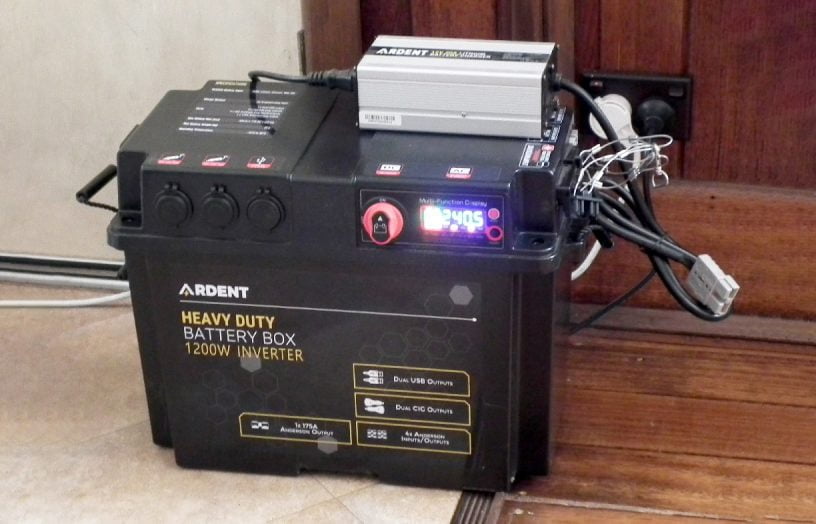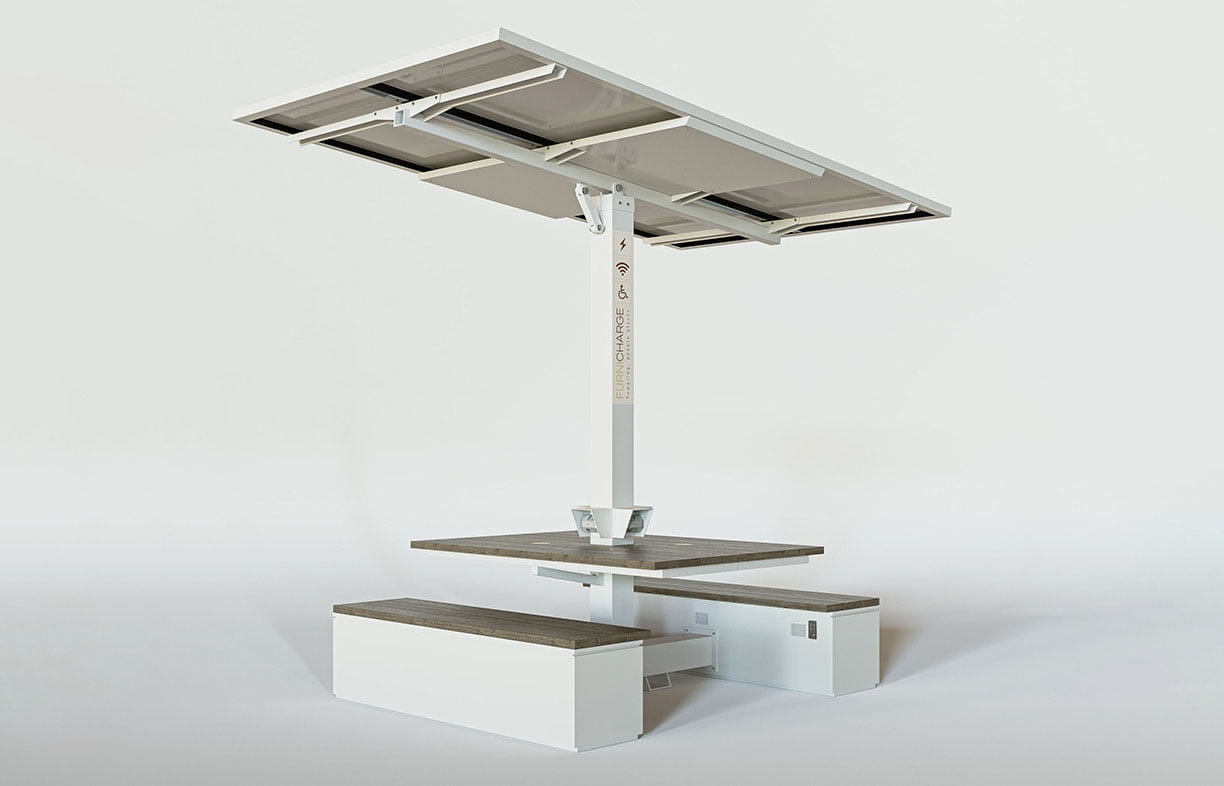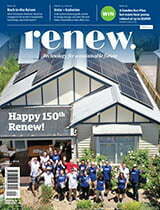Solar spring clean

Solar panels are largely a set-and-forget technology, but the occasional bit of maintenance can keep them performing at their peak. Lance Turner looks at what’s involved.
It’s easy to ignore your solar panels. After all, they sit on the roof and generate electricity without you having to think about them. But like everything that is left outside in the weather, the outdoor environment can affect them, potentially leading to a reduction in performance.
Two primary causes of reduced system output are dirty panels and panel damage. When a panel is damaged, such as by a stone or hail, it usually needs to be replaced for system reliability. Dirty panels, on the other hand, generally just have reduced output which slowly becomes worse over time.
So how often do you need to have your solar panels cleaned, if at all, and what factors determine the period between cleanings?
Things that affect cleaning requirements
Solar panels will self-clean to some degree, but this varies depending on a few factors:
Roof slope—steeper angles produce faster water runoff speeds, providing more effective cleaning just from rain. With shallow angles, water and dust will pool more easily, so the panels get dirtier faster. The Clean Energy Council (CEC) recommends a panel slope of at least 10 degrees to shed water and dirt effectively.
Location—rural areas tend to be dustier, but any area near a dirt road or construction work can produce a lot of floating dust that can settle on panels. If there is dust being moved around by wind or machine, panels will generally need cleaning more often.
Wildlife—it’s not just dust that blocks sunlight to solar panels; animal poo does too. This includes bird poo (the most common problem) and sometimes possum poo, although the latter tends to wash off in heavy rain if the panels have a reasonable slope.
Vegetation—if trees drop their leaves on your solar panels, this can greatly reduce energy production. Leaves tend to stick to panels when wet and may not wash off even in heavy rain. If you have trees relatively close to your panels or have noticed a sudden drop-off in output, especially after a storm or high winds, a quick visual inspection will tell you if leaves are the culprit.
Cleaning is not just about generation dropping off. Dust (and possibly other debris) can build up at the bottom of panels, even in areas with heavy rain. This accumulation shades the lower edge of the panels, which causes partial shading of that row of cells. This can cause heating in those cells, increasing the chance of a cell fault. This is a fairly common problem in panels with partial shading and you can see it in discolouration of the affected cells. Dirty panels can lead not just to reduced output, but also reduced panel lifespan.
How often should you clean your panels?
Urban panels in low-dust areas should be cleaned around every two to five years. However, local conditions can affect this—some panels may stay adequately clean just with cleaning by rain, while others may need cleaning every year if critter poo and leaves pose a regular problem.
Rural panels or panels in dusty areas are best cleaned once a year if possible or every two years at least. If left for too long, dust can build up to the point where it can greatly reduce power output of the array.
Commercial cleaning options
Your first option if your panels are dirty is to get a commercial solar panel cleaning company in to do the job.
Many window cleaning companies have added solar panel cleaning to their services because the same equipment can be used for both. However, there are also dedicated PV cleaning companies that specialise purely in cleaning solar arrays. One example is limesolarcleaning.com, who use local contractors to do the work. You simply book a panel clean online and they do the rest.
Solar installers may also offer a panel cleaning service when they do regular maintenance checks, assuming you get that done.
Should you do the cleaning yourself?
The Clean Energy Council recommends that system owners do not clean their own panels due to safety reasons. This is primarily due to possible insulation and earth faults, which may only appear when the panels are wet. Such faults may cause the panel frames to sit above ‘ground potential’, producing a possible electric shock hazard, which is particularly a problem on older systems which may not even have their frames grounded.
Note that inverters installed since July 2015 are required to monitor earth faults, but older inverters don’t. If there is an earth fault that would be triggered by your hose, it should show up when it’s raining heavily—you’d get an alarm message if it’s a post-2015 install or most likely see an error on the inverter if it was installed between 2010 and 2015. Systems installed prior to 2010 had no such protections.
Before performing any maintenance or cleaning on a solar system, it should be shut down using the provided shutdown procedure (see your solar system manual). Then, a solar-accredited electrician should test their way onto a roof (testing for stray voltage and proper grounding, first at ground level, then at roof level) and test the modules’ insulation resistance and earthing system before the modules are wetted down for cleaning. We suggest that if you do want to do the job yourself, leave it until after the next inspection by your solar installer, who should have tested the possible points of failure.
Note that turning the system off at the inverter does not de-energise the panels—potentially lethal voltages are still present on the solar array whenever the sun is shining, unless your system uses microinverters or optimisers with ‘rapid shutdown’ capability. To eliminate the voltage hazard, you could clean the panels after sunset, but you’d need to make sure you had enough light to see what you were doing safely. There are other risks as well to consider—see box ‘Safety when cleaning panels’ on p. 46.

Other system maintenance
Speaking of maintenance, just what else needs to be done on a solar array? Many solar owners treat a solar system as set-and-forget, but there are some maintenance steps that should be performed on a regular basis, even if it is as infrequent as every four or five years.
Some of these checks you can do yourself as they are just visual inspections, but if you are not sure, get the original system installer in to do these checks. If checking panels, do it from the ground or another vantage point such as a ladder (with a helper to hold the ladder). Don’t touch or climb on the array itself, just in case there is an electrical fault. Checks you can do yourself include:
A visual inspection of the top surface of panels for discolouration, cell cracks (visible as ‘tracking’, often called ‘snail trails’ as they look somewhat like that) or clouding, which indicates water ingress.
Check inverter for any dirt and dust buildup which might reduce operational efficiency. Heatsinks especially should remain relatively dust free so that heat can be emitted effectively.
Checks you should get an installer to do include:
- Inspection of solar panel cables, conduits and clamps for damage or looseness
- Inspection of array earthing cables and earthing points for damage, disconnection or corrosion
- Inspection of the underneath of panels for debris buildup such as leaves or bird, insect or vermin nests
- Inspection of the rooftop isolator(s) for any signs of heating or corrosion. These must be replaced if there is any doubt about their integrity as they are the primary cause of solar system fires in Australia
- Check the inverter for correct operation and any error codes that might indicate an issue. This must include the anti-islanding test to ensure correct operation during grid failures
- Check operation of other system components and wiring such as monitoring modules and energy storage systems.
Further reading
Technical article on production losses from dirty panels: bit.ly/pv-dustloss
Thank you to Michael Shaughnessy from the Clean Energy Council for his review of this article.
Further reading
 DIY
DIY
Deleting the genset
If you have the need for the occasional use of a generator, then why not replace it with a much cleaner battery backup system instead? Lance Turner explains how.
Read more Renewable grid
Renewable grid
Is a floating solar boom about to begin?
Rob McCann investigates the world of floating solar energy systems.
Read more Products
Products
Product profile: Portable solar recharge hubs
Providing device recharging for events or outdoor areas with no access to electricity can be difficult, but the Furnicharge Freedom Hub makes it simple.
Read more

